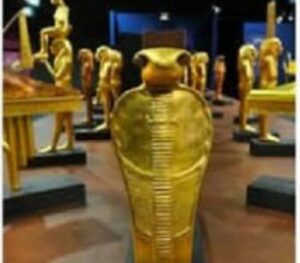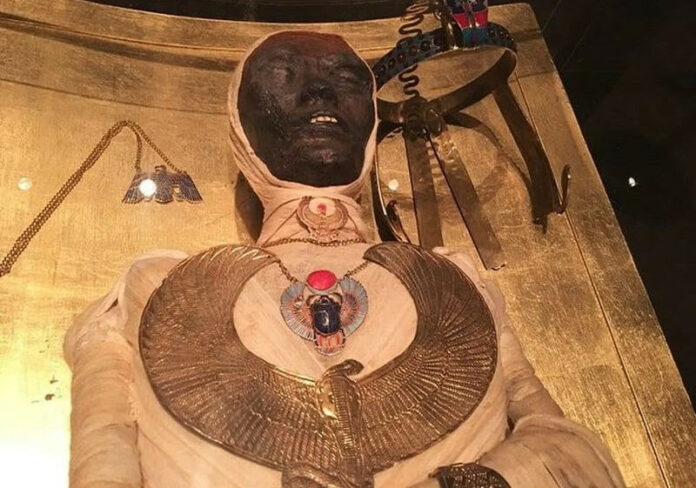On November 4th, 1922, a discovery that would forever change our understanding of ancient Egypt was made in the Valley of the Kings. British archaeologist Howard Carter and his team uncovered the entrance to the tomb of Tutankhamun, a young pharaoh from the New Kingdom period. When Lord Carnarvon, Carter’s patron, inquired if he could see anything through the small breach, Carter famously uttered the words, “Yes, wonderful things.”

Treasures of the Antechamber
A Glimpse of Opulence
The first room they entered, the antechamber, was a veritable treasure trove. Cluttered with gilded statues, chariots, and intricate furniture, it offered a glimpse into the royal life and artistry of ancient Egypt. Of particular note was a golden throne adorned with tender scenes of Tutankhamun and his queen, Ankhesenamun.

The Burial Chamber
Where the King Slept
The most sacred space was the burial chamber, where Carter and his team encountered the nested coffins of Tutankhamun. The innermost, made of solid gold, held the mummified remains of the boy king, adorned with an iconic funerary mask that captured his eternal youth and divinity.
The Treasury
Wealth for the Afterlife
Adjacent to the burial chamber lay the treasury, a room filled with items of immense value. Here, they found the canopic chest containing Tutankhamun’s preserved internal organs, and statues of deities meant to protect him in the afterlife, such as Anubis, the jackal-headed god of mummification.
A Pivotal Discovery

Tutankhamun’s tomb provided unprecedented insights into ancient Egyptian culture, art, and beliefs. The relative preservation of the tomb allowed historians to better understand funerary practices and the significance of the chosen artifacts. Although a minor king, Tutankhamun became a symbol of ancient Egypt’s grandeur, his untimely death shrouded in mystery.
Eternal Beauty and Continuing Fascination
The treasures of Tutankhamun continue to draw millions of visitors worldwide through traveling exhibitions, sharing the wonders of this remarkable discovery with a global audience. The grandeur of his burial items, the mystery surrounding his life and death, and the remarkable preservation of his tomb make Tutankhamun an enduring icon of ancient Egypt. Howard Carter’s discovery not only brought to light the splendor of a long-gone era but also underscored the eternal allure of ancient civilizations.

